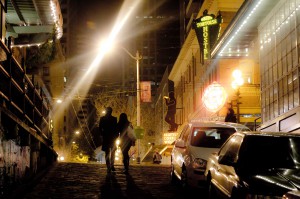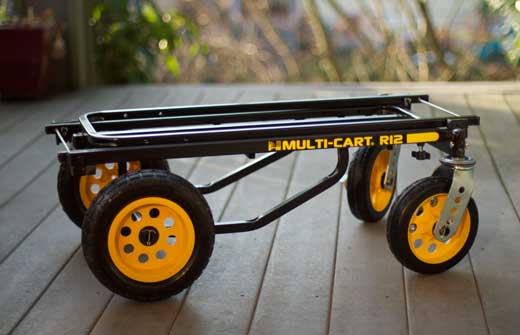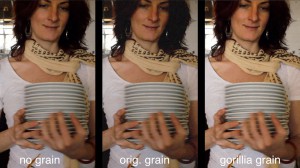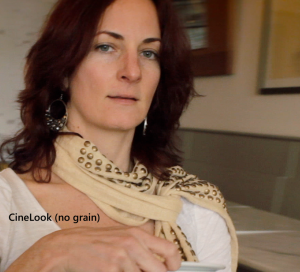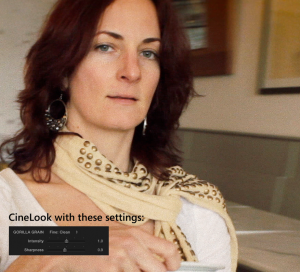As a filmmaker, I get a kick from working with well-designed, cutting edge technology. I’ve had the opportunity to use some amazing stuff over the past year: Tab Firchau’s RC helicopter, gyro-stabilized camera mounts, and the incredible Sennheiser 8060 mic. But nothing has had a bigger impact on the way I make films than the Nissan Leaf that Lara and I purchased in August. I use it on EVERY shoot. It carries everything I need. It’s sexy. It’s fun. It’s silent. It uses ZERO gas.
But what’s even more amazing, is that it’s the first car I’ve ever owned that I actually enjoy driving. The visceral enjoyment comes from it’s quiet, push-you-into-your-seat acceleration. It’s a trip to be sitting at a stop light next to another car and when the light changes, to leap from a dead stop to 30 mph – silently. The intellectual enjoyment comes from knowing that the oil and gas industry gets ZERO of my dollars, and the environment gets ZERO emissions. And because I live in Seattle, where in excess of 90 percent of our power is generated from hydro, I’m driving a car that is almost literally powered by the rain.
Since August, we’ve seen an increase in our monthly electric bill that will equate to about $200/year. By comparison, we were paying $200/month to fuel our Jeep Cherokee, before we traded it in for the Leaf. The Leaf doesn’t have nearly the cargo capacity of the Jeep, but with careful packing, it’s proven big enough for my current productions. And so far at least, none of my projects has taken me beyond the 100 mile range of the Leaf. If it does, our Nissan dealer offers Leaf owners a deep discount on SUV rental. And it won’t be that much longer before the first SUV-sized EVs hit the market (such as the Toyota RAV-4 EV or the Tesla Model X, due to be announced in first quarter of 2012).
Red carpet treatment: Free EV chargers are starting to appear, and commercial ones too. Our local Fred Meyer has just installed two Blink EV charging stations, right next to handicapped parking. So now it’s like I’ve got my own parking spot reserved every time I go pick up groceries.
Wish list: One thing that filmmakers never have enough of is power. It’s easy to blow breakers by plugging too many tungsten lights onto a circuit. And on location outdoors, it’s sometimes necessary to carry a noisy generator to get the power necessary to run hot lights. But with a car like the Leaf, which is basically a giant battery on wheels, shouldn’t it be possible to get power flowing OUT of the car? Yes. But no one has come up with a hack to tap it, yet. Nissan has announced plans to sell a device that converts the Leaf into an emergency power supply for a home, but it’s the size of a small refrigerator. I’m sure contractors and others who use large amounts of power at remote locations would be very interested in a small, portable power tap for the Leaf. I’m hopeful somebody will give me a chance to buy one in 2012.
After 5 months with the Leaf, it’s clear to me that the future of filmmaking – and driving – belongs to electricity.

